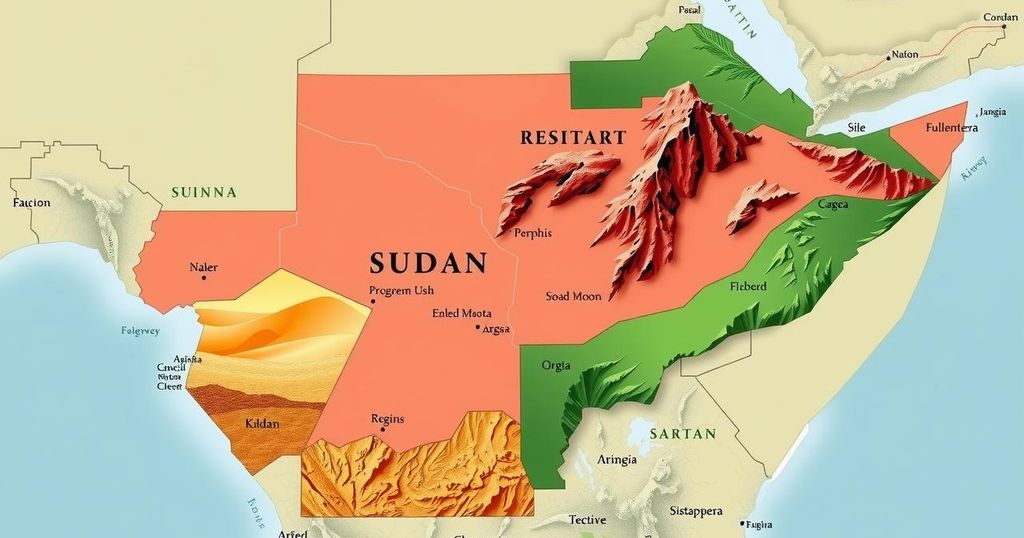An Overview of the Ongoing Conflict in Sudan

The Sudanese Armed Forces and the Rapid Support Forces are locked in a severe conflict, recently marked by the army’s capture of the Presidential Palace in Khartoum. The struggle has resulted in renewed ethnic violence in Darfur and significant displacement of civilians, highlighting the urgent humanitarian crisis in Sudan.
The ongoing conflict in Sudan features a significant clash between the Sudanese Armed Forces and the Rapid Support Forces (RSF), a paramilitary group. Recently, the Sudanese army achieved a crucial milestone by capturing full control of the Presidential Palace in Khartoum, marking an important development in this two-year-long conflict.
The Sudanese Armed Forces, representing the established military, have been engaged in fierce combat against the RSF, which emerged as a powerful and unregulated entity. This confrontation has led to severe consequences for the Sudanese populace, including a resurgence of ethnically-targeted violence in the Darfur region and the displacement of millions from their homes.
Both factions contribute to the ongoing turmoil in Sudan, complicated by underlying ethnic tensions and historical grievances. As fighting continues, the humanitarian situation worsens, with the civilian population bearing the brunt of the violence, further exacerbating the country’s instability and distress.
In conclusion, the conflict in Sudan pits the Sudanese Armed Forces against the Rapid Support Forces, resulting in devastating impacts on the civilian population. The recent capture of the Presidential Palace by the army signifies a critical escalation in hostilities, underscoring the urgent need for a resolution to the violence that has triggered widespread displacement and ethnic strife within the country.
Original Source: www.independent.ie








